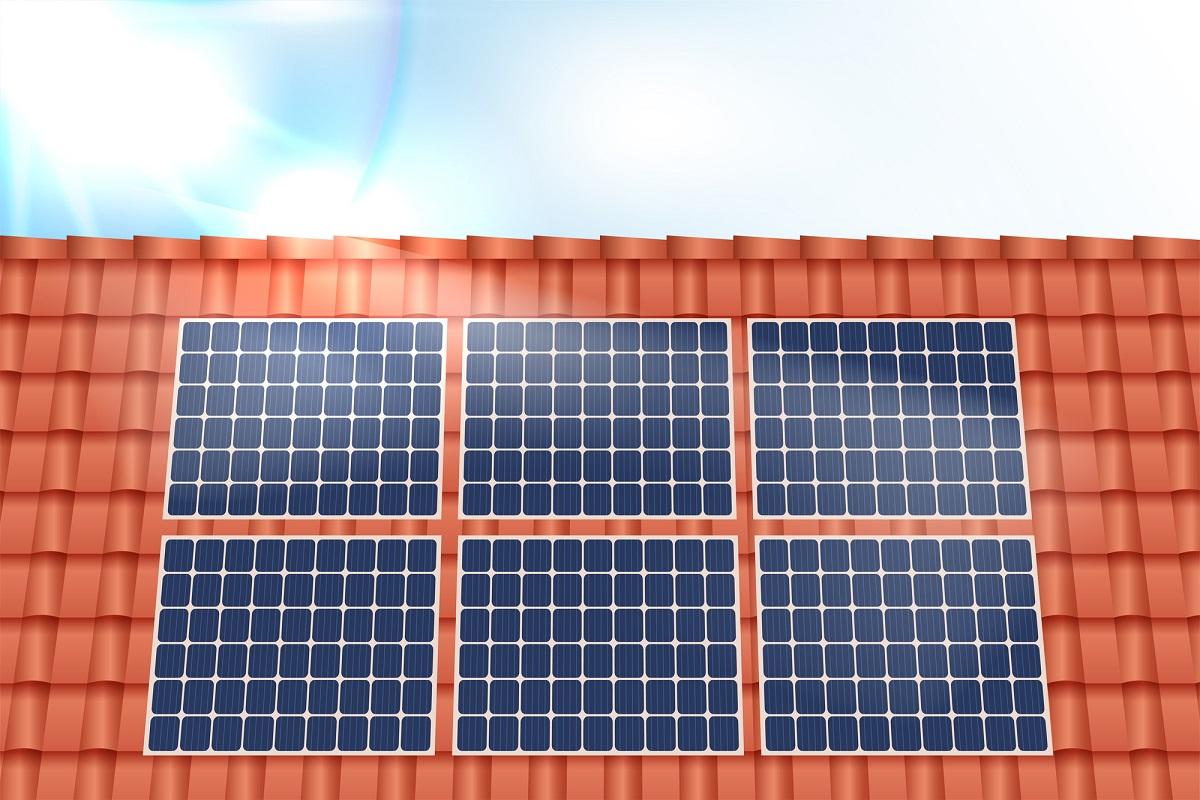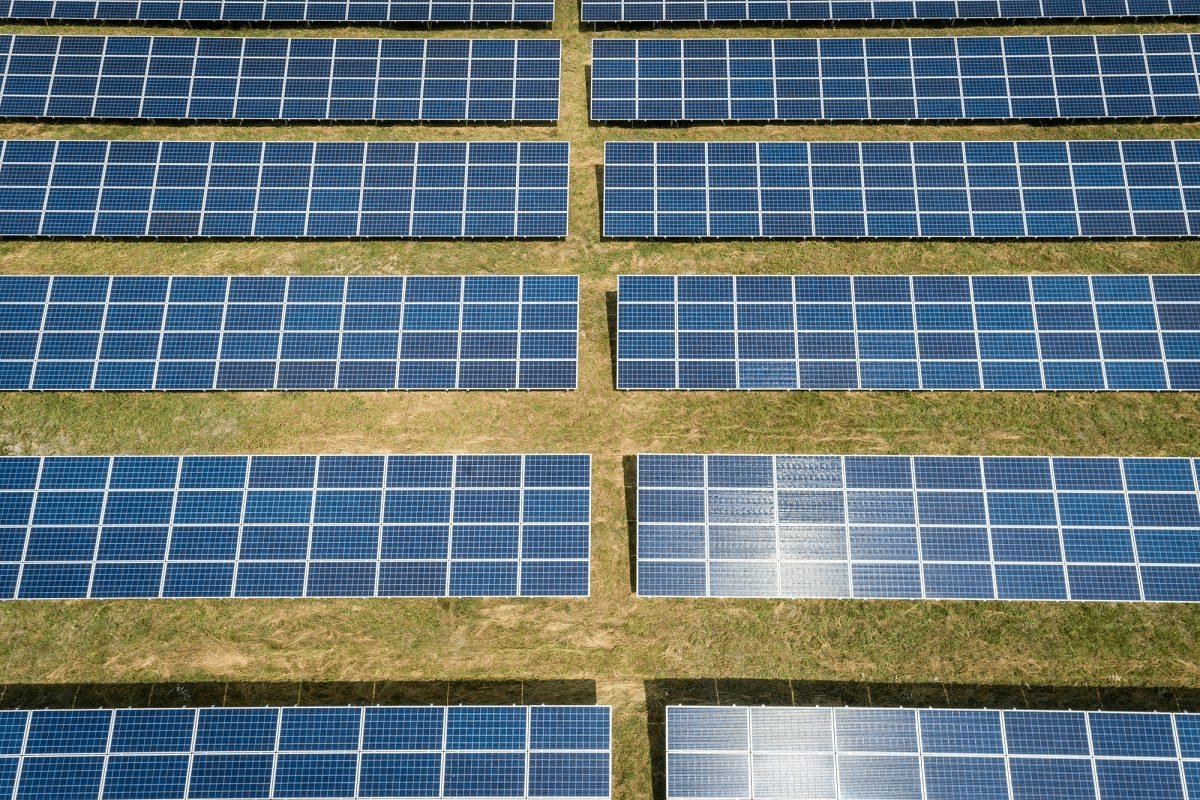Heterojunction solar cells are a recent advancement in the PV market which are addressing common drawbacks of standard modules. It reduces recombination and improves performance in hot climates. Come let us explore more about them.
Heterojunction Solar Cells and Technology
These are also known as Silicon heterojunctions (SHJ) or Heterojunction with Intrinsic Thin Layer (HIT) solar panels. These are a group of HJT solar cells that use advanced photovoltaic technology.
Don’t be confused about what is heterojunction technology. These are built on an N-type monocrystalline silicon substrate and have non-doped amorphous silicon layers (i-a-Si:H) placed on top which improves their efficiency and performance.
These cells are made of three key materials:
1. Crystalline Silicon (c-Si) – Conventional solar panels use them to build homojunction solar cells. They are of two types polycrystalline silicon and monocrystalline silicon. However, monocrystalline is the only one considered for HJT solar cells because of its better purity and efficiency.
2. Amorphous Silicon (a-Si) – The key component for these solar cells is hydrogenated to fix density faults producing hydrogenated amorphous silicon (a-Si:H). This material is easier to dope and has a higher bandgap.
3. Indium Tin Oxide (ITO) – It is the chosen material for the transparent conductive oxide (TCO) layer in these solar cells while researchers are exploring its alternatives to lower prices. ITO’s reflectivity and conductivity make it an ideal contact and exterior layer for these solar cells.
Classification of Heterojunction Solar Cells
Doping differentiates these solar cells into n-type and p-type cells:
- N-type cells use phosphorous-doped c-Si wafers which provide additional electrons for negative charging and make them resistant to boron-oxygen-induced efficiency reduction.
- P-type cells doped with boron are better suited for space applications due to their space radiation resistance supplying the cell with one less electron which positively charges it.
Heterojunction Solar Cell Working Principle
These solar cells use three layers of absorbing materials combining thin-film and traditional photovoltaic techniques. When sunlight reaches these panels, it initiates the photovoltaic effect which converts photons into electricity.
The main working process of HJT involves:
- Sunlight stimulates electrons at the absorber layer’s P-N junction moving them to the conduction band and forming electron-hole pairs (e-h).
- The terminal attached to the P-doped layer collects stimulated electrons and generates electricity which flows through the load.
- After passing through the load, the electron returns to the cell’s rear contact and recombines with a hole to complete the procedure of a particular e-h pair.
This process occurs continuously as the modules generate electricity. Standard c-Si PV modules have efficiency restrictions due to surface recombination which occurs when electrons and holes recombine without contributing to electrical flow.
HJT cells address this issue by using a passivating semiconductor film with a larger bandgap layer composed of a-Si:H which slows charge flow to prevent recombination. This buffer layer slows the charge trickle enough to provide a high voltage while also preventing recombination before electrons are collected thereby enhancing efficiency.
During the light-absorption process, all three semiconductor layers absorb photons facilitating their conversion into electricity.
- The top layer amorphous silicon (a-Si:H), collects and captures sunlight and reflections.
- The middle layer, crystalline silicon (c-Si) is very efficient and converts photons into electricity.
- The bottom amorphous silicon layer (a-Si:H) converts the remaining photons, improving total efficiency.
Did you know the prices for solar installation have fallen by 40% over 10 years that helps the industry to grow into a new market and set up thousands of systems nationwide.
By combining technologies enables the heterojunction cells to harness more energy than could be captured on their own achieving 25% or greater efficiency.
Also See: A Complete Guide on TOPCon Solar Technology
Heterojunction Solar Panels Price
According to current designs, SHJ modules cost 0.48-0.56 USD/W compared to 0.50 USD/W for conventional modules.
Note: The heterojunction solar cell prices may vary due to market fluctuations, brand differences and regional factors.
Advantages and Disadvantages of Heterojunction Technology

Applications of heterojunction solar technology in utility-scale settings can offer efficiency from 25 to 30% efficiency. However, the pros of HJT come with cons too which are listed below:
| Advantages | Disadvantages |
| Outperform standard solar cells by converting more sunlight into electricity. | Advanced skills and specialized equipment are required for manufacturing and integration. |
| Efficient at high temperatures to reduce performance degradation. | Susceptible to damage because of their thin build. |
| Perform consistently in low light and ideal for changing weather conditions. | Moisture susceptibility compromises efficiency and longevity. |
| 30% efficiency with 92% bifaciality making it perfect for large-scale projects. | Production volume restrictions, complex technology and a wide range of semiconductors may raise prices and reduce availability. |
| Only 5-7 manufacturing steps are required which reduces production costs. | Due to its recent launch, there is limited installation and maintenance experience. |
Cross-reference: Double-heterojunction crystalline silicon cell fabricated at 250°C with 12.9 % efficiency
Top Heterojunction Solar Cell Manufacturers
The major heterjunction solar panel makers are:
1. REC
Their Alpha Pure series uses advanced heterojunction (HJT) cell technology to provide power density ranging from 226 watts/m² to 470 watts. REC Group’s module features a gapless cell arrangement, twin design and sleek aesthetics optimized for residential applications. These panels ensure ideal power under a variety of conditions resulting in a higher temperature coefficient, improved electrical flow and a quick return on investment.
Also, check out the REC Solar Panel Review
2. JINERGY
Offer bifacial N-HJT solar modules with super high cell efficiency of more than 24%. Jinergy modules have 166 cells with a 9BB half cut which results in a 10%-35% improvement in power in a variety of conditions. They provide advanced and cost-effective cell and module production capacity with low-light performance, low-temperature coefficient and decreased degradation.
3. AKCOME
Specialize in cutting-edge HJT solar cells and modules with a bifacial rate of 95% and efficiency of up to 26%. AKCOME Optronics solutions are capable of producing 100μm thick silicon slices with PID-free, low-temperature coefficient and ammonia-free wastewater output.
4. Risen Energy
Their Hyper-Ion Module series has an ultra-high bifacial factor and patented Hyper-link Interconnection technology which maximizes power output. Risen Energy modules provide a power output of 700-725Wp with a bifaciality of 110 to 132 cells that optimize efficiency by 22.8-23.3 %. They offer a steady power temperature coefficient, ultra-low carbon emissions and strong anti-LID performance.
5. HuaSen
This China’s industrial leading company provides ultra-high efficiency N-type silicon heterojunction (HJT) solar wafers, cells and modules. Huasun products deliver 3% greater annual energy production than the TOPCon bifacial solar module with power outputs of up to 750W and a maximum efficiency of 24.16%. Featuring double-glass construction and an EPE-based encapsulant as well as PIB sealing provides improved waterproof, fireproof and corrosion-resistant qualities which are appropriate for harsh conditions.
Heterojunction Vs. Bifacial Panels

Both use passivating coatings to decrease surface recombination and improve efficiency thereby sharing certain structural similarities. The essential distinction is that heterojunction panels can be developed for monofacial or bifacial use whereas bifacial panels may integrate several base technologies other than HJT.
The following table compares the essential features of bifacial and heterojunction (HJT) solar PV modules:
| Characteristic | Bifacial modules | HJT Modules |
| Light Absorption | Absorb light from both the front and back sides. | A layered structure improves the separation of electron-hole pairs for higher efficiency. |
| Efficiency | Achieve over 30% efficiency. | Achieve up to 26.7% efficiency. |
| Advantages | Improved design flexibility and adaptability. | Increased conversion efficiency, improved temperature tolerance and slower degradation rates over time. |
| Challenges | For optimal deployment, accurate modelling and simulation are necessary due to the consistent impact of albedo on performance. | Complex manufacturing processes and greater production costs are preventing wider use. |
Both solar PV technologies improve efficiency and performance providing distinct advantages and challenges while increasing the practicality and sustainability of solar power generation.
Heterojunction Vs. Traditional Crystalline Silicon Panels
Heterojunction technology advances traditional c-Si panels by improving recombination and fixing other shortcomings. Let us compare the two technologies to understand how minor changes to the cell structure affect the module’s overall performance.
| Characteristic | Heterojunction (HJT) | Monocrystalline (mono c-Si) | Polycrystalline (poly c-Si) |
| Materials Absorber Layer | Mono c-Si and a-Si:H | Mono c-Si | Poly c-Si |
| Structure | Mono c-Si wafer-based layer encased in a-Si:H passivating layers | Mono c-Si p-n junction | Poly c-Si p-n junction |
| Lifespan | 30 years | 25-30 years | |
| Temperature Coefficient (Average) | -0.21%/ºC | -0.446%/ºC | -0.387%/ºC |
| Highest Recorded Efficiency | 26.7% | 25.4% | 24.4% |
| Market Share | 5% | 36.0% | 54.9% |
| Price Range | $0.34/W | $0.16/W-$0.46/W | $0.24/W |
Note: The efficiency mentioned may vary depending on brands and their models.
Ultimately, heterojunction solar cells are versatile and highly efficient making them great for limited space applications. These panels offer great performance but come with hefty price tags which are reported to fall in coming years. For more such informative content, keep reading our blog posts.
Recommended: 20+ Most Powerful Highest Watt Solar Panels
The post What is Heterojunction Solar Panel: Working and Benefits appeared first on Energy Theory.





